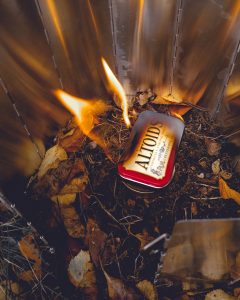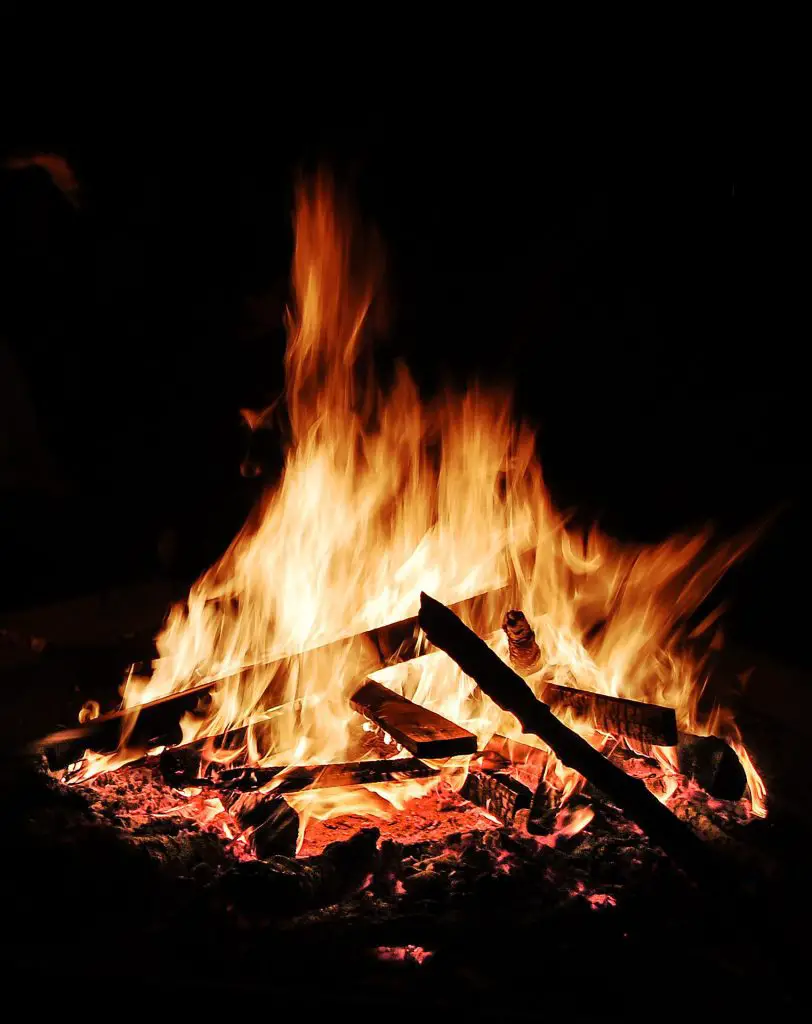Long ago, our ancestors developed ways to make fire without rubbing two stones or sticks against each other (friction). They learned to make char cloth for survival since their whole lives depended on it.
In today’s world, char cloth is very much valid and is considered the best fire starter. Not only does it have the potential to hold fire for long, but it also is easy with low burn temperature.
As a survivalist who wants to build a fire the traditional yet effective way, you should learn how to make char cloth (super effective survival tinder). This article will fully explore what char cloth is and the materials needed to make one.
What is a Char Cloth?
Char Cloth is a piece of light material that can support the ignition of tinder for a fire. It works using a process called Pyrolysis – the decomposition of the cloth in the absence of oxygen, and at an increased temperature. It can also be said that anything that creates a spark can set off the char cloth.
You may be interested in
| How to Pack Sleeping Bag? |
| What is the Survival Rule of Threes? |
| How Many Lumens in A Flashlight Are Needed in Different Survival Situations? |
What Do You Need to Make a Char Cloth?
After you must have understood what a char cloth is and how useful it is in survival, you should get right into knowing the materials used in making one. The following is a list of essential materials you will need to make char cloth for fire successfully.
Cotton
One of the vital materials used in making char cloth is a cotton material – 100% pure with no synthetic fibers. The presence of these fibers affects combustibility, which isn’t so great. If you have a white piece of cloth or a dyed material, it is highly recommended.
Tin Can
The other vital thing you need in the procedure is a tin can. First of all, the Tin can be airtight and sealable to reduce Oxygen – Altoids mint can often be used. While you are picking a can to use, ensure that the interior is clean.
Likewise, all parts are to be made of metal – no plastics. In case you don’t have a lid, aluminum foil is a great option to consider as you wrap the can in it.
Scissors
Certainly, you would have to make perfect cuts of the cotton material; a pair of scissors is a useful tool to ensure that.
Nail or any Puncturing Tool
In making char cloth, you would have to puncture holes into the Tin to allow the passage of gases. A nail or any available puncturing tool would be appropriate. The aim is to make small holes and not large ones; thus, you should be careful about what tool to use.
Interested in finding more about clothing? CLICK HERE
What are the Steps Involved in Making a Char Cloth?
Now that you have all your materials ready, you should make char cloth for fire, as required for survival.
Cut the Piece of Cloth
As you are with a piece of cloth – 100% natural plant fiber like Cotton, Jute, or Linen, you have a little work to do. You will need to cut this piece of cloth with a pair of scissors into large sizes that will fit properly into the Tin, without you having to fold. On most occasions, a 3 x 2” measurement is perfect. Whatever you do, try not to use synthetic cloths like Polyester, as they cannot catch a spark.
Puncture Hole in the Tin
Also, you have another work to do on the Tin before you begin to make proper plans for making char cloth. Often, most people make use of Altoids Min tins since they are airtight and sealable. On the two sides of the Tin, you are expected to puncture small holes using a nail or any puncturing tool you can find. The importance of these holes is to make sure there is reduced pressure via the passage of gases.
Lay Cloth Pieces in the Tin
Now that you have your two materials ready, the next step is appropriately placing them to begin work. The cloth pieces that you have should be placed gently over one another in the metal tin. As you do this, try not to pack them tight to limit the formation of char.
Place the Tin Over a Burner
As you cover the Tin containing the pieces of cloth, the next step is placing it over a heat source. If you are in the wilderness, campfires are excellent sources of heat. Drop the Altoid can over the fire and wait until smoke starts coming out of the holes punctured. The steam has to be consistent and steady to validate the concept of Pyrolysis.
Remove and Cool-Off
Once you see that the smoke has stopped from the holes on the Tin, you should remove the Tin from the heat source. At this point, it is done cooking and needs to cool off properly. A lot of care is needed here because it gets too hot, and you don’t want to endanger yourself, i.e., oxygen causing a fire on the cloth on exposure.
Open the Tin and Observe the Char Cloth
After several minutes or hours of cooling, you should eventually open the Tin and observe the char cloth. There are often three results you get:
Cooked
: Black; in shape; a little fragile and; soft.
Undercooked
: Not fully black.
Overcooked
: Black; too fragile and crumbles.
Peel the Char Cloth Apart
Make sure char cloth is cooked properly before you should carry on with the final step – peeling. With utmost care, peel the char cloth pieces apart until you have the cloth left in the Tin.
On further occasions, you can use this cloth to start a fire – all you need is a spark.
Conclusion
The ultimate survival is learning how to do a couple of things and packing essential items for the journey. Knowing how to make char cloth (super effective survival tinder) seems like one of those top things on a list of what to do.
As you learn the entire concept and process of Pyrolysis, brace yourself for when you need a tinder in the wilderness.
If you have any suggestions or queries feel free to reach out in the comments section below.
Surviving in a situation seems like a daunting task if you don’t have all the information. We have compiled complete guides for you to follow in every situation. CLICK HERE to check them out.



